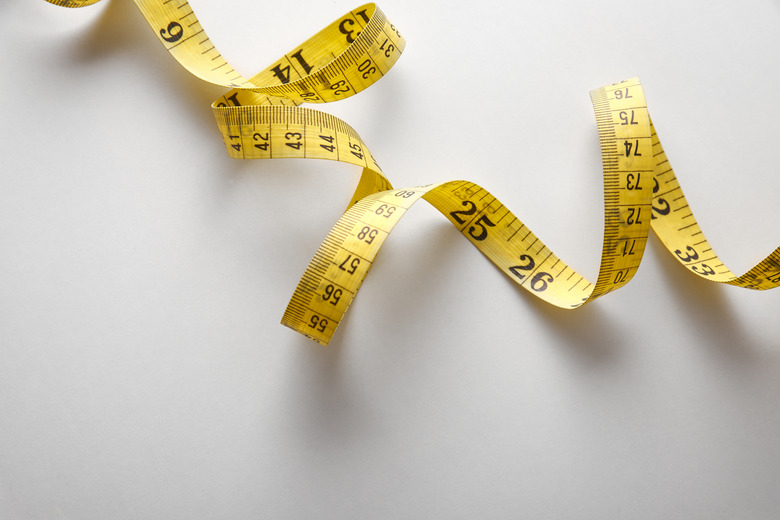How To Convert Centimeters To Meters
For physics and many math classes, students often need to use the metric system to solve certain problems. The metric system uses multiple or submultiple powers of 10 to relate different units of measurement. Since the meter is the standard unit of length in this system, students will need to know what prefixes such as "centi," "milli" or "kilo" mean to convert between different units of measurements. If you know the appropriate conversion factor, you can convert quickly from centimeters to meters.
Step 1
Know that the prefix "centi" in centimeter means 1/100 or .01 meters. Therefore, the conversion factor is 1 centimeter = .01 meters. You can also find the conversion factor by knowing that 100 centimeters = 1 meter and divide both sides of this equation by 100 to get the same conversion factor of 1 centimeter = .01 meters.
Step 2
Practice converting centimeters to meters with the following problem: Change 550 centimeters to meters.
Step 3
Use the conversion factor 1 centimeter = .01 meters from Step 2 and multiple 550 by .01 meters. You find that this equals 5.5 meters. Therefore, 550 centimeters is equal to 5.5 meters.
Step 4
Change from meters to centimeters by using the conversion 100 centimeters = 1 meter from Step 1 to check your answer in Step 3. By multiplying 5.5 by 100, you get 550 centimeters.
Step 5
Convert quickly from centimeters to meters by using an online conversion calculator (see Resources).
TL;DR (Too Long; Didn't Read)
To perform these simple calculations for different length measurements in the metric system, it may be useful to memorize the meaning of some of these prefixes. For some commonly used prefixes, see the Resources.
Cite This Article
MLA
Tolen, Ida. "How To Convert Centimeters To Meters" sciencing.com, https://www.sciencing.com/convert-centimeters-meters-5329285/. 22 August 2009.
APA
Tolen, Ida. (2009, August 22). How To Convert Centimeters To Meters. sciencing.com. Retrieved from https://www.sciencing.com/convert-centimeters-meters-5329285/
Chicago
Tolen, Ida. How To Convert Centimeters To Meters last modified March 24, 2022. https://www.sciencing.com/convert-centimeters-meters-5329285/
